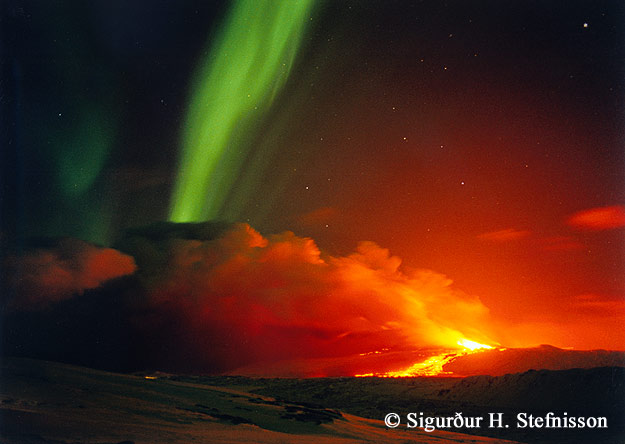Geologists explain this high concentration of volcanic activity as being due to a combination of the island's position on the Mid-Atlantic Ridge and a volcanic hotspot underneath the island. The island sits astride the boundary between the Eurasian and North American Plates, and most volcanic activity is concentrated along the plate boundary, which runs across the island from the south-west to the north-east of the island. Some volcanic activity occurs offshore, especially off the southern coast. This includes wholly submerged submarine volcanoes and even newly formed volcanic islands such as Surtsey and Jólnir.
The most recent[update] volcanic eruption in Iceland was that of Eyjafjallajökull, which started on April 14, 2010. The Eyjafjallajökull eruption closely followed an eruption in Fimmvörðuháls, which had erupted on March 20, temporarily quiesced by April 12, and then erupted with a large ash plume (due to magma coming out under ice) on April 15. The ash cloud was significant enough to shut down airports across more than 20 European countries, many of which only began to reopen on April 20.

Tidak ada komentar:
Posting Komentar